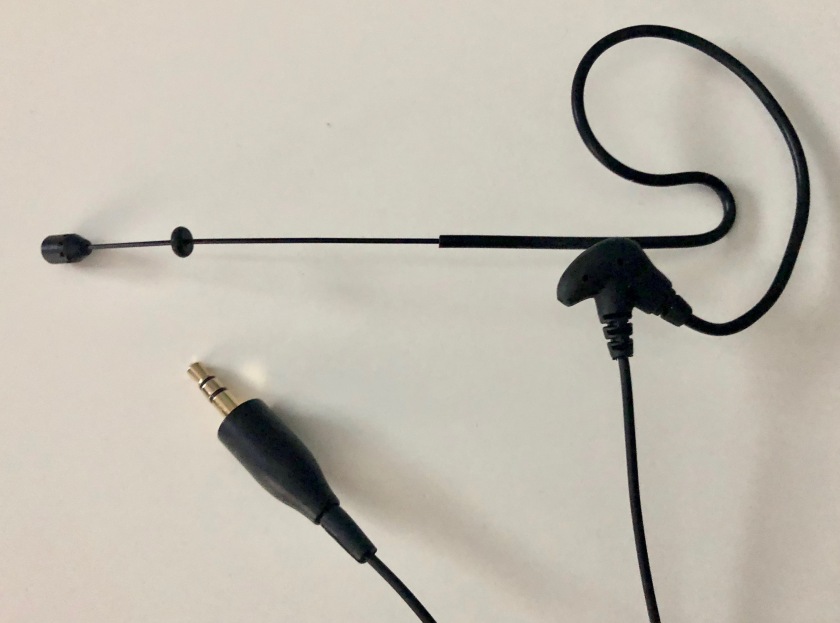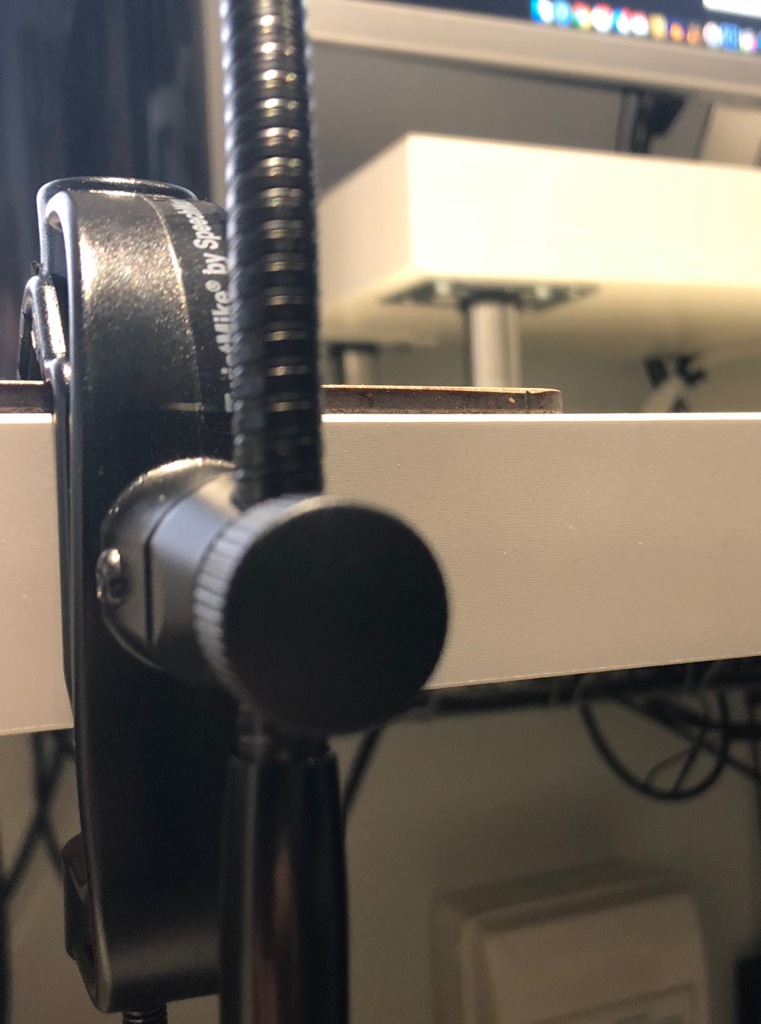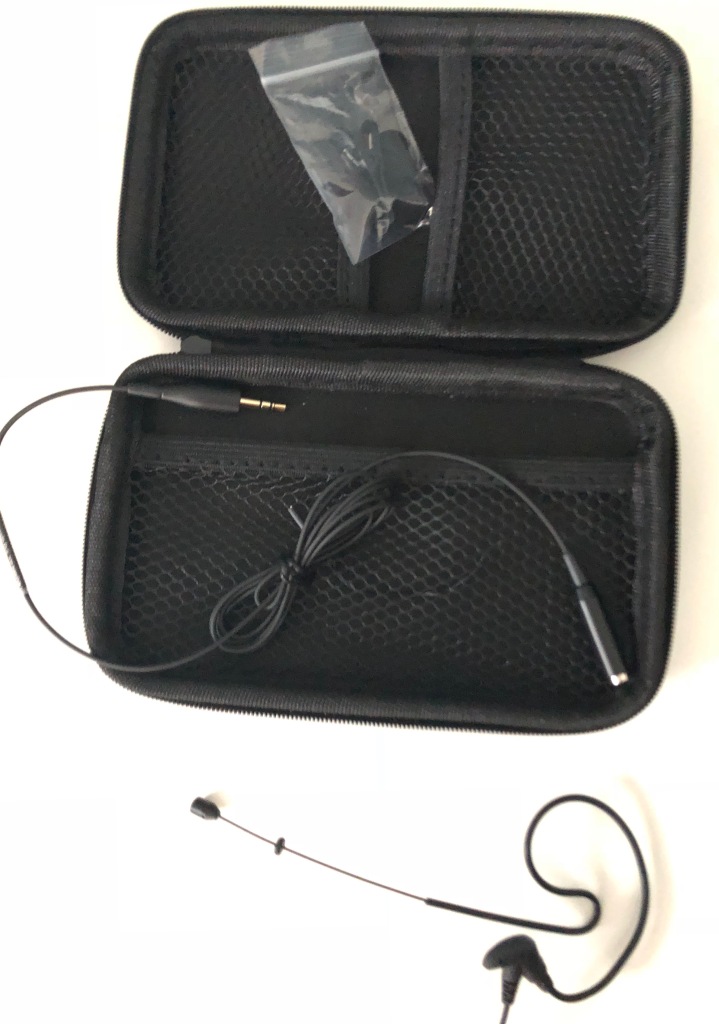
What’s in a microphone? That’s a tricky one. From the staggering value of the Blue Yeti to the eternal quest for anywhere approaching decent accuracy from a wireless setup, everyone’s needs are different. Some people are happy to sit at a desk; others crave the freedom of using a transcription device to dictate anywhere. Budget plays a part, of course, but you can’t put a price on accuracy – after all, the more words Dragon gets right first time, the more time you save proofreading and editing. For freelancers on a deadline, time is money; even if you don’t measure your productivity in dollars per hour, your time is equally precious.
I’ve always had the opinion that dictation is an investment in your writing business. It’s a costly experiment for those unsure whether they can easily transition from typing to talking; you need a decent computer, a copy of Dragon itself and – the final piece of the jigsaw – an excellent microphone. SpeechWare have once again come up with the goods in the latter department with two very different microphones that aren’t cheap but deliver superb accuracy.
First up is the FlexyMike Single Ear Cardioid (SEC). As headsets go, this is as thin and light as it gets. Weighing in at just 5g/2oz, it really is barely there once you manoeuvre it into place. I’m not a huge fan of wearing headsets, but even I didn’t have a problem with this one – it’s about as comfortable a device of this type can possibly be. When you first unpack the FlexyMike, you might feel your heart skip a beat at what €149 buys you – but what initially appears flimsy is actually made of a very strong metal alloy (more on this below).

SpeechWare cite a number of improvements in this version of the FlexyMike over their previous model. Firstly, they claim the unidirectional microphone element is more sensitive than ever before; secondly, that there are significant improvements to the actual construction. This includes a titanium “memory frame” with three points of contact in the earlobe, all contributing to high comfort and impressive stability despite the feather-light feel. The price reflects the insanely light weight and miniaturisation, the likes of which I haven’t really seen in a headset before.
You are also paying for a stunning level of accuracy. For me, this is primarily a transcription microphone; plugged into a Sony recorder at 192kBps MP3, it produced flawless audio that hovered between 99.3% and 100% accuracy, depending on the complexity and length of the source material. This was in Dragon Professional Individual 15; it also produced 99.5% accuracy via straight dictation in version 6 for Mac when paired with a SpeechWare USB MultiAdapter (an additional purchase at €149).

When using a setup like this, you are getting into eye-wateringly expensive territory; it’s almost €300 for both the FlexyMike and SpeechWare’s own USB soundcard to go with it. Bear in mind, though, this gives you a complete solution for both desktop dictation and mobile transcription (although, disappointingly, you will need an additional adapter to plug the FlexyMike into a smartphone).
But that’s not all. SpeechWare also sent me their latest TwistMike, a quirky device unlike any other I’ve seen. It is, in essence, a giant gooseneck with a big old clamp on the end of it – utterly bizarre at first glance but, when positioned on a desk, it starts to make sense as a genuine alternative to a large studio mic on a boom arm. The gooseneck is so flexible that it can be positioned at almost any height or angle and the included 2m cable (78.5in) should enable you to set this up pretty much however and wherever you want it.

The downside? Again, it’s expensive (€179 – ouch) and, while it will plug into a recorder via its 3.5mm jack, this surely isn’t the expected use scenario (although the 30in/75cm long boom can be worn around the neck as long as you don’t mind people openly pointing and laughing at you). Instead, it is ideally paired with a TableMike base (if you already own one) to make it the “longest desktop microphone in the market” with the added bonus of a mini-XLR connector.
Alternatively, it combines superbly with the aforementioned SpeechWare USB MultiAdapter, which the company claims is acoustically matched for maximum performance. This pairing provides the same audio signal as their award-winning TableMike desktop microphones (as they share the same capsule and electronics), but in a much smaller and transportable format.

It’s hard to argue with this latter combo as, again, my testing resulted in consistently high accuracy of over 99.5% (and again, in some cases, 100%) in both dictation and transcription across the PC and Mac versions of Dragon (transcribed files were slightly less accurate on the Mac, but that is a shortcoming of this version of the software and would result in the same issue with any microphone).
I have to admit to being slightly nonplussed at the look and design of the TwistMike when I first took it out of the box but, after clamping it to my desk and fully appreciating its flexibility, I was won over. Suddenly, my Rode NT-USB (a microphone I love, by the way) seemed almost intrusive and clunky on its huge boom arm. Even more surprising was how I found the TwistMike to be even more versatile, allowing me to position and angle the microphone in any way I pleased. It’s certainly different, that’s for sure, and delivers on accuracy without any question.

The same goes for the diminutive FlexyMike SEC – packed with a carrying case and some windshields (although a couple of miniature deadcats would probably be a good addition), this could well be the ultimate portable microphone for the transcription aficionado.

Quality doesn’t come cheap, I guess, but only you can decide whether these pricey but superb microphones fit within your budget. If they do, you will be rewarded with some of the best accuracy in Dragon I’ve ever seen. Now if only they actually wrote several thousand words a day for you…
(Thanks to Speechware for sending me these products for an honest review. I do not receive any monetary compensation for this from the company and the links above are not affiliate links. I’ll be looking at their new 2018 TableMike One very soon.)













